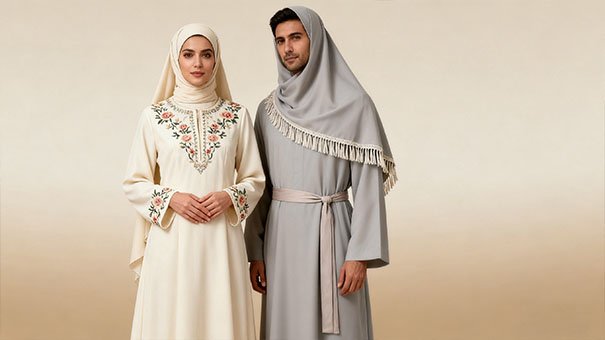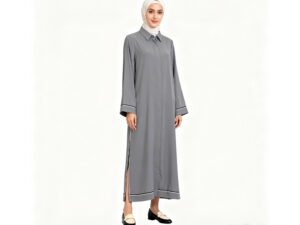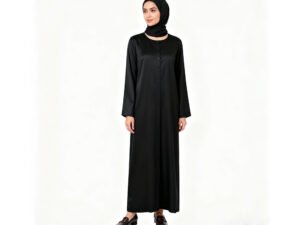In this guide, we’ll break down what global quality requirements look like and how you can guarantee your Abaya production truly meets them.
Table of Contents
- Why International Standards Matter in Abaya Manufacturing
- Key Abaya Manufacturing Standards You Should Follow
- Abaya Quality Control Processes You Must Implement
- Important Certifications for Abaya Manufacturers
- Choosing a Manufacturer That Meets Global Standards
- Work With a Certified Abaya Manufacturer
- FAQ
- Conclusion
Why International Standards Matter in Abaya Manufacturing
Today’s modest fashion buyers are smart — they care about durability, stitching consistency, fabric safety, and ethical production. Meeting international manufacturing standards shows customers you’re serious about quality.
Think of it like this: if your Abayas enter global markets without proper quality assurance, it’s like driving a car with no brakes — risky, unpredictable, and damaging to your reputation.
Following global standards also helps reduce returns, increase buyer confidence, and open the door to wholesale partnerships and B2B contracts.
Key Abaya Manufacturing Standards You Should Follow
1. Fabric Safety & Compliance
International markets — especially the EU and U.S. — require fabrics to be safe, colorfast, and free from harmful chemicals. Standards such as OEKO-TEX Standard 100 ensure textiles meet safety requirements.
2. Consistency in Product Construction
This includes consistent sizing, thread strength, seam durability, and embroidery stability. Your internal team needs strict Abaya quality assurance processes.
3. Ethical & Responsible Production
International buyers increasingly prefer manufacturers aligned with ethical labor and sustainability standards.
Abaya Quality Control Processes You Must Implement
Quality control isn’t one action — it’s a system. A reliable factory performs quality checks at every stage.
1. Pre-production Testing
Includes fabric strength tests, shrinkage tests, and embroidery thread performance.
2. In-line Production Monitoring
Spot checks during cutting, stitching, and embroidery ensure no errors compound later.
To learn more about the workflow, see:
Ensuring Abaya production quality
3. Final Inspection
This covers measurements, loose threads, beadwork tightening, ironing, packaging, and labeling.
For a deeper breakdown, visit:
Abaya production process
Important Certifications for Abaya Manufacturers
Certifications provide third-party confirmation that your production follows international standards. Here are the most relevant ones:
- ISO 9001 – Quality Management Systems
- SGS Textile Testing & Quality Standards
- Intertek Textile Compliance Testing
These certifications signal reliability, making your brand more appealing to international distributors and bulk buyers.
Choosing a Manufacturer That Meets Global Standards
Selecting the right OEM partner is half the battle. You need a factory that provides transparency, testing reports, and proven quality control processes.
If you need help comparing options, check out:
How to select Abaya supplier
Your ideal factory should offer:
- documented QC procedures
- fabric certification reports
- stable production workflow & trained workers
- hand-finished embroidery or premium craftsmanship
When these elements come together, your brand is ready for international expansion.
Work With a Certified Abaya Manufacturer
Looking for a production partner that meets international standards — with strict quality control, premium fabrics, and fully hand-crafted embroidery?
We help global Abaya brands scale confidently.
FAQ
1. Do Abayas really need to follow international standards?
If you want to sell globally — absolutely. Standards ensure safety, durability, and credibility.
2. Which certification is the most important?
ISO 9001 for production management and OEKO-TEX fabric safety are the top two.
3. How do I know if a factory is reliable?
Request their QC workflow, test reports, and production photos. A trusted supplier always shares this openly.
Conclusion
Ensuring your Abaya production meets international standards isn’t just about avoiding defects — it’s about building a global-ready brand. With the right quality systems, certified materials, and a reliable OEM partner, your products stand out in the crowded modest-fashion space.
Ready to take your Abaya line worldwide? Choose a partner committed to world-class standards.







